Papers by Vincent Cattersel
A multi‐disciplinary and multi‐analytical study of a white lacquered cabinet from a private colle... more A multi‐disciplinary and multi‐analytical study of a white lacquered cabinet from a private collection has shed new light on its materials and techniques. Stylistically this lacquered cabinet can be situated in the late 17th or early 18th century tradition of white European lacquers. Inspired by trendsetting white lacquer works of Gérard Dagly and Martin Schnell, this Western cabinet with decorative hinges, corner mounts, and motives such as the dancing boy, chrysanthemums and flying wildlife clearly aims to imitate the exotic atmosphere of Far Eastern lacquerware.
Lacquerwares are objects decorated by multiple, composite layers of lacquer. Far-Eastern lacquer ... more Lacquerwares are objects decorated by multiple, composite layers of lacquer. Far-Eastern lacquer production dates back to 5000 B.C. and, starting from the 15th century, they have been imported towards Europe. Due to their increasing popularity, they were imitated in Europe from the 17th century onwards. In context of an interdisciplinary research project on European lacquers, called ‘European Lacquer in Context’, THz-TDI was considered as a useful tool to investigate the internal structure, stratigraphy and condition of surface or subsurface layers of these complex multi-layered objects.
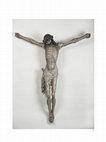
The statue of the Crucified Christ in the Church of St Harlindis and St Relindis in the village o... more The statue of the Crucified Christ in the Church of St Harlindis and St Relindis in the village of Ellikom in Belgian Limburg is part of a Calvary
group which may have been preserved in its original location. Stylistically it fits into a group of about ten statues of the Crucified Christ which are
associated with the so-called Master of Elsloo and which are in churches in the city of Liège, the Belgian and Dutch provinces of Limburg and the
neighbouring region in Germany. The figure is made of oak and is composed of three parts: the body and two arms. It has been hollowed at the back. The carving has been skilfully and painstakingly executed, with special attention given to anatomical detail. Most remarkable is the preservation, beneath two to four layers of overpaint, of a great part of the original polychromy, which is, moreover, in an exceptionally good condition. In its original polychromed state the figure of Christ had blood flowing freely from his wounds over his pale pink skin. The loincloth, now painted white, was completely gilded. No doubt the statue was created by a gifted artist capable of merging realism and pathos into a striking image. This high-quality statue is an important example of the late-Gothic artistic heritage of the territory described today as the Meuse-Rhine Euregion, which has long formed a cohesive cultural area.
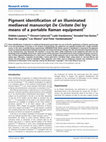
Direct identification of pigments in mediaeval illuminated manuscripts was one of the first appli... more Direct identification of pigments in mediaeval illuminated manuscripts was one of the first applications of Raman spectroscopy in art and archaeology. In previous in situ analysis of handwritings, the equipment was typically provided with a single excitation source. In this work, a portable Raman spectrometer (EZRAMAN-I-DUAL Raman system) is introduced to characterise the pigments used in an important illuminated mediaeval manuscript, De Civitate Dei (Library in Bruges, Ms.106). Characteristics important for these in situ measurements were discussed. We introduce a set-up that allows stable positioning of the equipment and point out the advantage of the availability of two lasers, which are part of the instrument. Good performance of the introduced Raman spectrometer, to allow pigment identification in a short time, is proved. Finally, pigments such as lead white (2PbCO 3 · Pb(OH) 2 ), lead-tin yellow type I (Pb 2 SnO 4 ), malachite (Cu 2 CO 3 (OH) 2 ), mosaic gold (SnS 2 ), vermillion (HgS), carbon black (C), red lead (Pb 3 O 4 ) and azurite (Cu 3 (CO 3 ) 2 (OH) 2 ) could be identified. These pigments were often used in mediaeval artworks and contribute to the enrichment of information of the materials used by the illuminator.
articles by Vincent Cattersel
This study focuses on the very beginning of lacquerware production with chinoiserie decoration in... more This study focuses on the very beginning of lacquerware production with chinoiserie decoration in Spa from the end of the seventeenth century to the third quarter of the eighteenth century. Through an interdisciplinary approach, the historical and material-technical context of this important historical lacquer production is elucidated. Archival research was conducted along with a stylistic study of thirty objects, mainly boxes. Furthermore, seventeen of the objects from this study group were chemically analysed for their organic ingredients, pigments and metal applications.

A set of 19th-century furniture in black lacquer, on papier-mache or on turned wood, has been sub... more A set of 19th-century furniture in black lacquer, on papier-mache or on turned wood, has been subjected to an in-depth observational, historical and chemical study. The results show four different technological approaches: two for the papier-mache objects and two for the wooden chairs. The cyclic labour-intensive lacquering procedure of repeated stoving and polishing lacquer on papier-mache with mother-of-pearl inclusions is reflected in the cross-sections. Pinaceae resin and heated oil are frequently found, conform with surviving recipes. A variant of the old form of varnish\textquotesingle , as historically described, was likely used. In the two pairs of wooden chairs, the lacquer layers are thinner than on the papier-mache items. They contain copal and show different stratigraphies. These observations can be the starting point to relate technological and chemical variations to different origins. New art historical findings on lacquer production and trade in England, France and Belgium, and the study of contemporary recipes, frame the analytical results in a historical context. [GRAPHICS] .
A differential expression analysis technology developed for linear modeling of gene expression da... more A differential expression analysis technology developed for linear modeling of gene expression data was used in combination with thermally assisted hydrolysis and methylation gas chromatography/mass spectrometry (THM-GC/MS) to support the analysis of lacquers and varnishes on historical objects. Exudates from tropical trees, such as Manila copal, sandarac, South American copal, and Congo copal, which were frequently used in finishing layers on decorative objects up to the early 20th century, were compared through this approach. Highly discriminating features indicate biomarkers that can help to identify copals in resinous lacquers. The approach allows new, more systematic ways for finding biomarkers in the analysis of lacquered objects of art and varnishes.
Restauro : Zeitschrift für Kunsttechniken, Restaurierung und Museumsfragen, 2016

In order to optimize chromatographic analysis of European lacquer, thermochemolysis temperature w... more In order to optimize chromatographic analysis of European lacquer, thermochemolysis temperature was evaluated for the analysis of natural resins. Five main ingredients of lacquer were studied: sandarac, mastic, colophony, Manila copal and Congo copal. For each, five temperature programs were tested: four fixed temperatures (350, 480, 550, 650 degrees C) and one ultrafast thermal desorption (UFD), in which the temperature rises from 350 to 660 degrees C in 1 min. In total, the integrated signals of 27 molecules, partially characterizing the five resins, were monitored to compare the different methods. A compromise between detection of compounds released at low temperatures and compounds formed at high temperatures was searched. 650 degrees C is too high for both groups, 350 degrees C is best for the first, and 550 degrees C for the second. Fixed temperatures of 480 degrees C or UFD proved to be a consensus in order to detect most marker molecules. UFD was slightly better for the molecules released at low temperatures, while 480 degrees C showed best compounds formed at high temperatures.
proceedings by Vincent Cattersel
inbooks by Vincent Cattersel
phdtheses by Vincent Cattersel


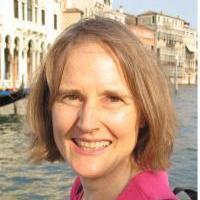
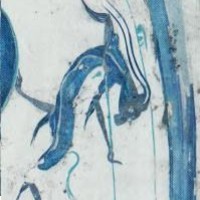
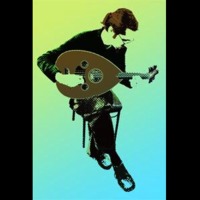



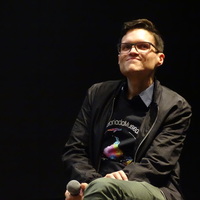


Uploads
Papers by Vincent Cattersel
group which may have been preserved in its original location. Stylistically it fits into a group of about ten statues of the Crucified Christ which are
associated with the so-called Master of Elsloo and which are in churches in the city of Liège, the Belgian and Dutch provinces of Limburg and the
neighbouring region in Germany. The figure is made of oak and is composed of three parts: the body and two arms. It has been hollowed at the back. The carving has been skilfully and painstakingly executed, with special attention given to anatomical detail. Most remarkable is the preservation, beneath two to four layers of overpaint, of a great part of the original polychromy, which is, moreover, in an exceptionally good condition. In its original polychromed state the figure of Christ had blood flowing freely from his wounds over his pale pink skin. The loincloth, now painted white, was completely gilded. No doubt the statue was created by a gifted artist capable of merging realism and pathos into a striking image. This high-quality statue is an important example of the late-Gothic artistic heritage of the territory described today as the Meuse-Rhine Euregion, which has long formed a cohesive cultural area.
articles by Vincent Cattersel
proceedings by Vincent Cattersel
inbooks by Vincent Cattersel
phdtheses by Vincent Cattersel
group which may have been preserved in its original location. Stylistically it fits into a group of about ten statues of the Crucified Christ which are
associated with the so-called Master of Elsloo and which are in churches in the city of Liège, the Belgian and Dutch provinces of Limburg and the
neighbouring region in Germany. The figure is made of oak and is composed of three parts: the body and two arms. It has been hollowed at the back. The carving has been skilfully and painstakingly executed, with special attention given to anatomical detail. Most remarkable is the preservation, beneath two to four layers of overpaint, of a great part of the original polychromy, which is, moreover, in an exceptionally good condition. In its original polychromed state the figure of Christ had blood flowing freely from his wounds over his pale pink skin. The loincloth, now painted white, was completely gilded. No doubt the statue was created by a gifted artist capable of merging realism and pathos into a striking image. This high-quality statue is an important example of the late-Gothic artistic heritage of the territory described today as the Meuse-Rhine Euregion, which has long formed a cohesive cultural area.